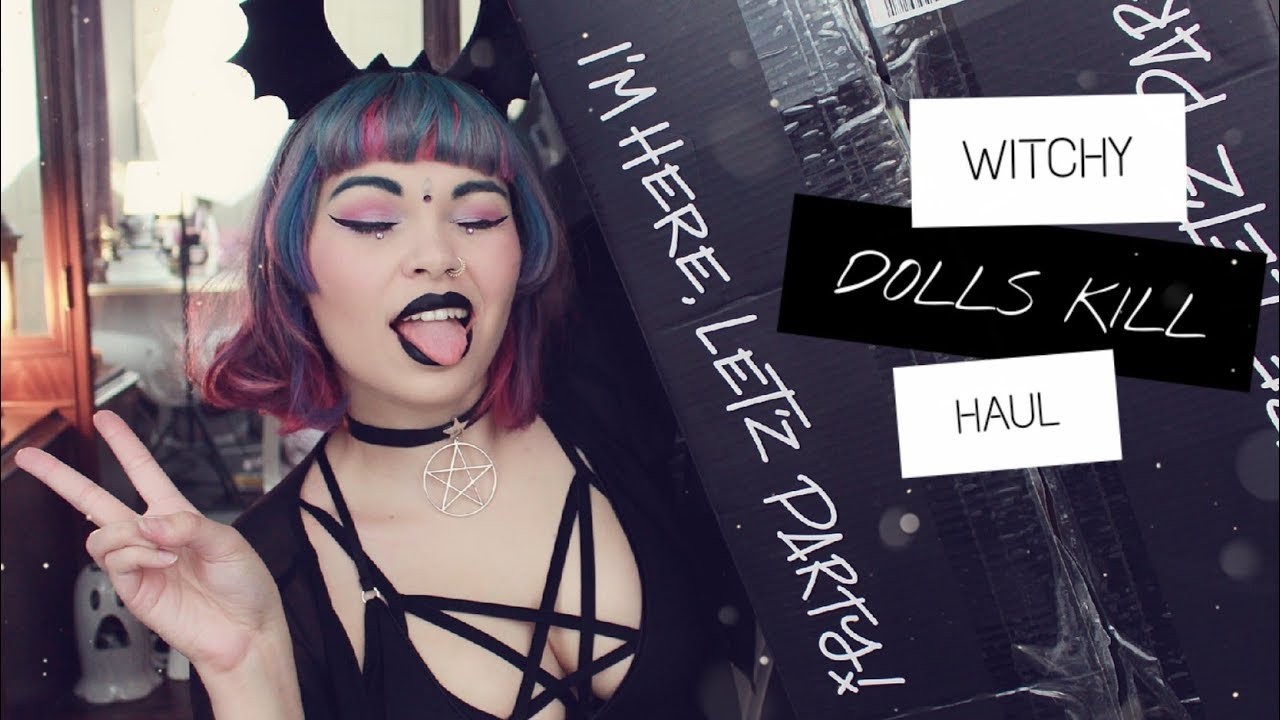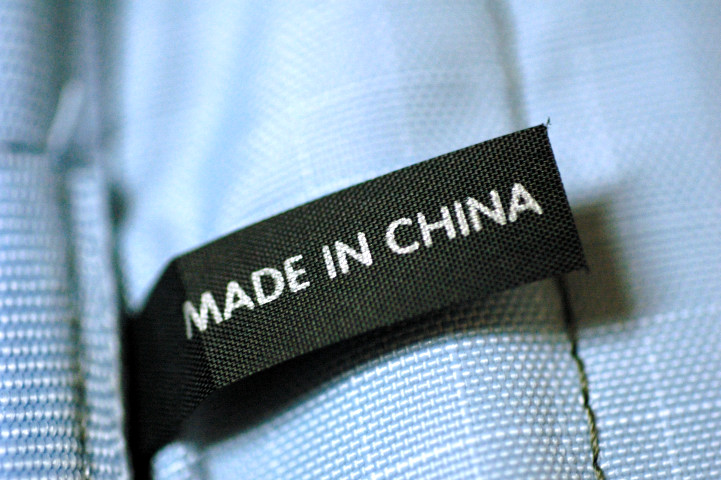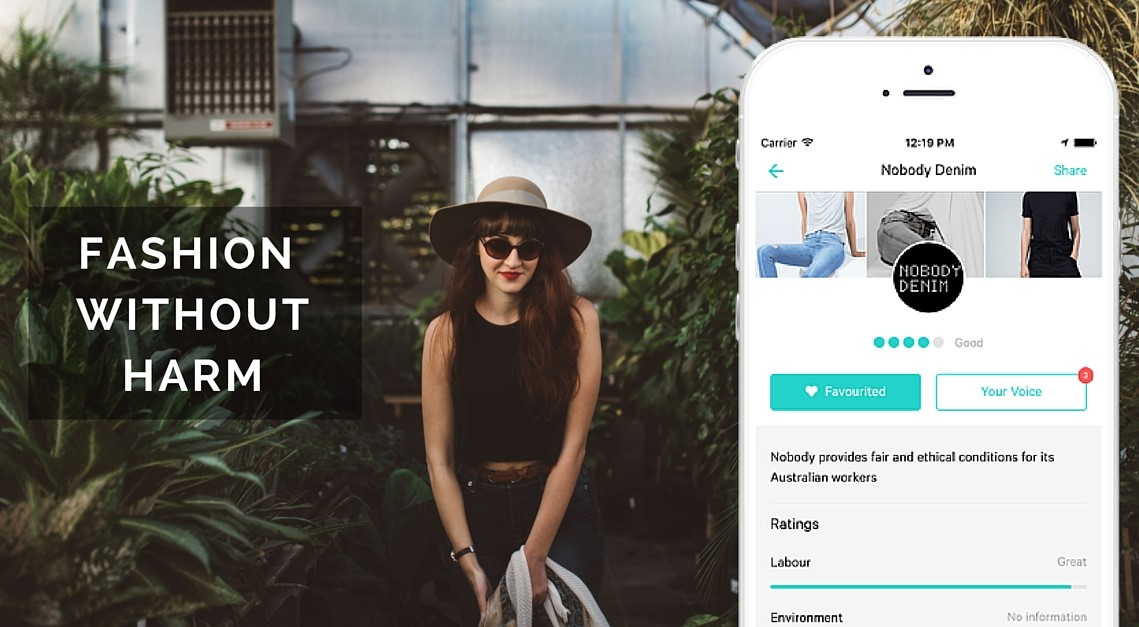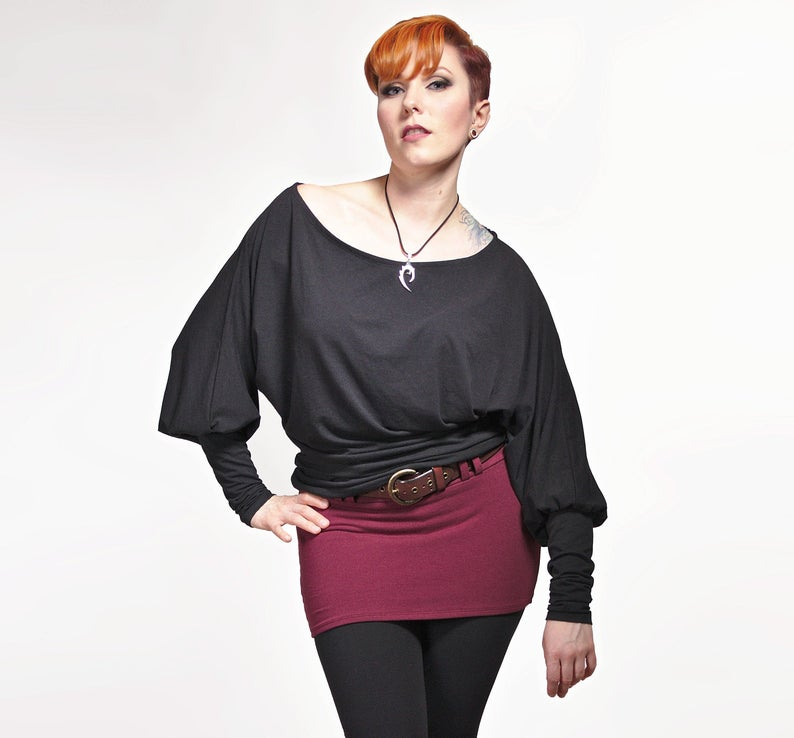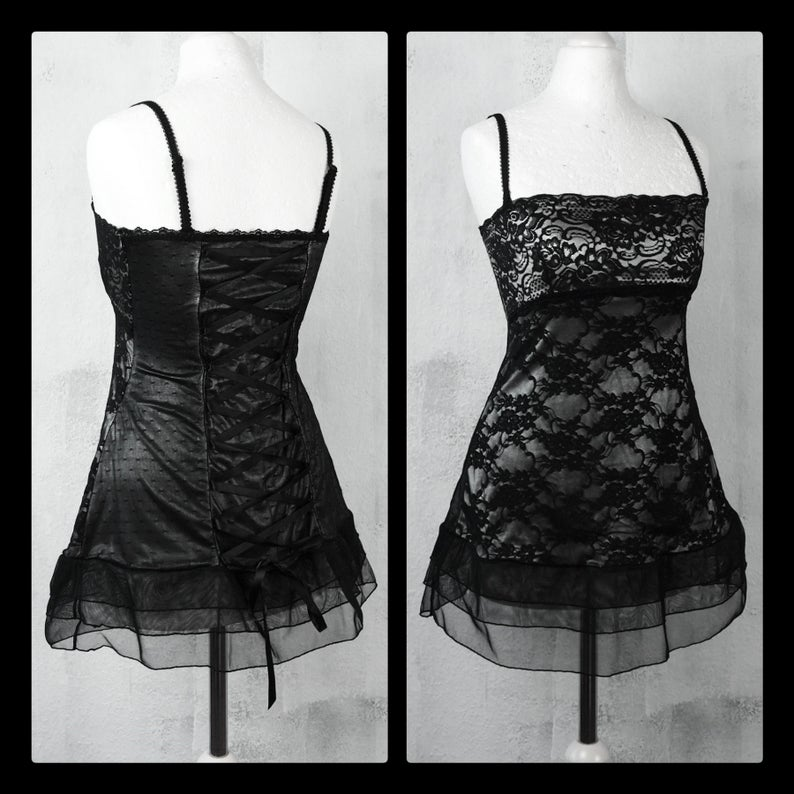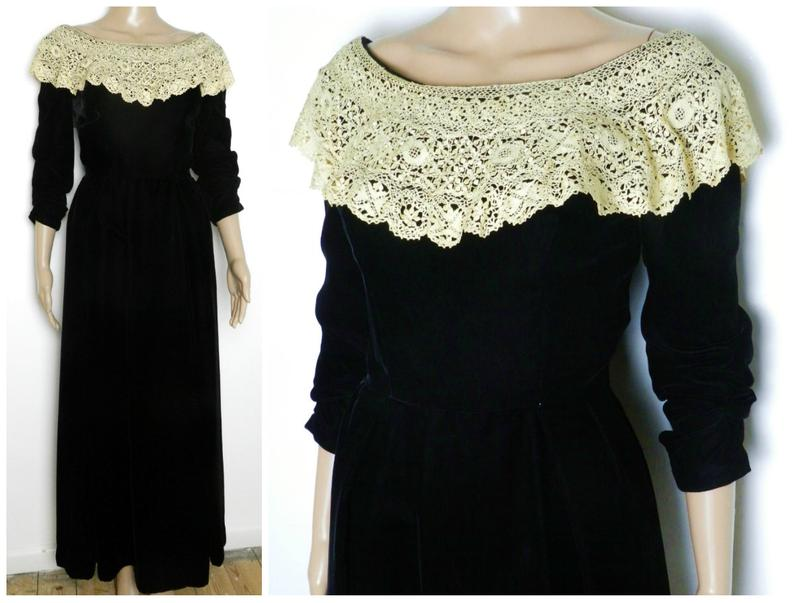A few months ago hashtag ‘#GothIsNotKillstar’ started to spread on social media in response to a perceived problem in goth fashion. The popularization of pricey alternative fast-fashion brands such as Killstar and Punk Rave had led newcomers to feel excluded thinking they could not afford to be goth, despite the the reality that the goth fashion is rooted in DIY. Immediate controversy followed this tag due to those who misunderstood the message. Those who stood up for these brands generally took the hashtag as an attack on their taste, when in actuality it is not their taste that is the problem-- fast-fashion is.
REASONS TO AVOID FAST FASHION
Fast-fashion is an intrinsically toxic system and has a detrimental impact on our environment. The intent behind fast-fashion is to produce an abundance of clothes at a cheap rate so the average consumer can buy more for less, and corporations can profit as much as possible. The most obvious issue in this system is the self-destructive “I need more” mindset. The problem, however, is much more complex. First world companies outsource their clothing from third world ones where wages are kept low and poor working conditions are allowed, and to keep up with the demand those corners are cut even further.
The concept of outsourcing labor and fast-fashion began in the 1950s, America used to make ninety-five percent of their clothes-- today they make three (1). This is a recent issue, and we as a society are finally starting to see the consequences of this business model. In the last seventy years, fast-fashion has become the world’s second-largest polluter, and there have been multiple cases of incidents in sweatshops leading to deaths. In 2013 the Dhaka garment factory collapse killed 1,134 workers (2). There were cracks in the building for months prior to the collapse, but they went ignored due to first world greed. If the owners of overseas factories were to say, “We can’t produce that cheaply anymore,” companies would switch to a different factory who could.
This pressure is what causes those corners to be cut. Those who support fast-fashion claim it to be “providing jobs,” but businesses don’t outsource from sweatshops for the greater good, they do it merely for the mass profit. If one truly desires to help the economy of the third world countries, support fair-trade, not sweatshops.
FAST-FASHION IN GOTH
Popularization and acceptance of fast-fashion began with businesses H&M (among a few others), seeped into the mainstream, and now infiltrates our subculture with brands that have no care for our scene except potential profits. In the 90s, businesses started to take note of the popularization of alternative subcultures and along came a new wave of shops like Hot Topic. Without the internet’s pressure to instill trends, thrift and DIY still remained prevalent during this time.
But in the 2000s, as internet culture grew, so did the “trendiness” of different fashions. Come 2010, Killstar was founded, around the same time the media popularized idea of goth style started to boom again. Killstar flooded the internet by offering “goth influencers” items for free. This form of marketing led to the idea, “I need these clothes to be goth.” Although the clothes are high-priced, the company has no issues throwing out their stuff to influencers because of how dirt cheap the garments are to make. Newbies’ first look into the scene is now typically through the internet, and they see the word ‘goth’ attached to Killstar or maybe even on the cheaper side of things, Wish products. Both of these are problematic.
A scene that was once built on creativity and music had now fallen into the capitalist trap of consuming. Everyone should be better than resorting to cruelty for fashion, but it is very disappointing to see a subculture built on DIY to have such a dramatic consumer shift. Goths are better than that; goth is a music-based subculture and as long as the music still exists, that’s what should matter most. Not how much fast-fashion pieces one has in their wardrobe.
HOW TO SPOT UNETHICAL BUSINESSES
My solution is to start shopping with the idea everything you buy makes an impact. Your dollars are your vote in the economy; do not throw them into the hands of cruelty for a hobby or unnecessary reason. If everyone were to follow this rule eventually all sweatshop utilizing companies would die out from bankruptcy, leading their ethical counterparts - fair-trade companies - to become the standard.
It is generally simple to decipher the ethics of a brand, the ones who put care into their production methods will generally be transparent about them. Check the tag for where the item has been produced. If the item was made in China, Indonesia, or any third world country and the company is not advertised as fair-trade, it is a safe bet to not support that company. The app ‘Good on You’ is a good starting point when figuring out what shops to avoid (this endorsement is not sponsored).
‘Good on You’ investigates brands and gives a formal rating on the ethics of their production methods. The downside to this is they only cover major shops, so if you want to know the ethics behind a smaller brand you will still have to do the investigating yourself. But the app is a good starting point in order to get into the habit of knowing how your clothes are made. If you do your research and the business which you wish to buy from is not immediately transparent about its production, there generally still an email or way of contact to ask. Just be aware of ‘greenwashing’. Businesses pretend to be saints when their ethics are in question by a potential consumer, so ask for details and look out for fluff.
Something else to look out for is that “Printed in America” does not equate to “Made in America”. Check the brand of the shirt before purchasing it. This creates a bit of a dilemma with a lot of band merch; many bands will outsource their shirts initially. But by all means, please support your favorite bands! Shirts are not the only way to support a band, buy their music, and if you want to advertise then buy a patch, or a sticker! The great thing about Bandcamp is that everything is ‘name your price.’ There will be a base price but you can give as much money as you wish to said band. Support the scene; not suffering.
ETHICAL “GOTH FASHION”
Most everyone in the US is aware of larger thrift shops such as Goodwill and Salvation Army, and it is great to thrift when possible. Thrifting keeps our existing clothes in circulation so clothes are saved from being trashed and pre-existing materials are utilized rather than having to produce new ones. Thrifting apps like ‘Mercari’ and ‘Depop’ are great for secondhand finds since they allow the search of keywords and sizes, and expand buying options to worldwide (also not sponsored). Fast-fashion brands such as Killstar are vastly available on these apps, although there’s a bit of a moral grey area with this. Even if my Killstar bag didn’t come directly from Killstar, those who see the Killstar name flashed across my purse do not know it was secondhand and may want to buy from the site. This makes me accidentally a walking billboard for the brand I claim to protest. Secondhand support, however, is still better than firsthand, but it is best to avoid this situation. This leaves the question of what to do with already purchased Killstar. Burning it would be a waste. Instead, I can transform it. Paint, dye, and DIY it.
For the non-artistically inclined who still want to dress unique, DIYing thrifted clothes is not the only option. Etsy has an abundance of artists who sell clothes they themselves have DIYed or created. The variety on Etsy is lovely, although beware of the fast-fashion re-sellers within the site. There are, however, many sellers of upcycled clothing, secondhand vintage clothing, and newly sewn designs.
The only hangup with firsthand designers can be materials, it’s best to be on the lookout for items made of materials such as hemp, organic cotton, and bamboo. Just remember, even basics can look “goth.” So find a sustainable black outfit, add accessories, tease up your hair, and that creates a look in itself that no one else has.
In the end, goth isn’t all about clothes, but it is important to go that extra mile to make conscious and ethical decisions in where our fashion comes from.
~Moose
Sources:
1. Morgan, Andrew, director. The True Cost. Bullfrog Films, 2015.
2. Hoskins, Tansy. “Reliving the Rana Plaza Factory Collapse: a History of Cities in 50 Buildings, Day 22.” The Guardian, Guardian News and Media, 23 Apr. 2015, www.theguardian.com/cities/2015/apr/23/rana-plaza-factory-collapse-history-cities-50-buildings.



